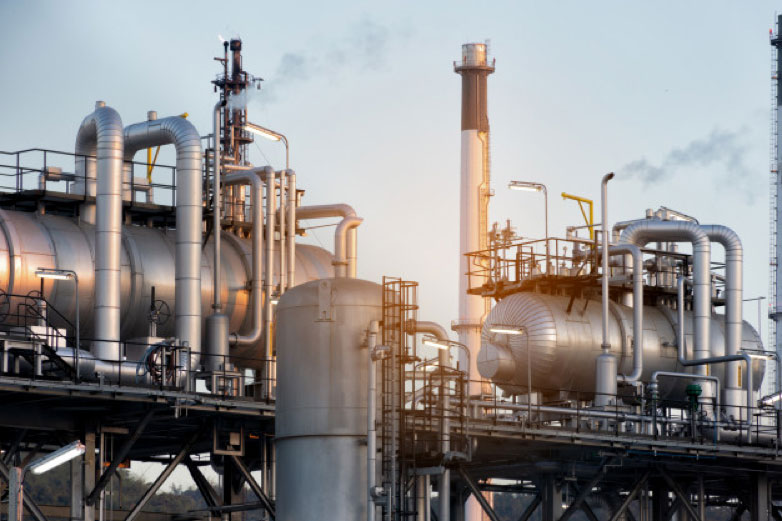June 5, 2019
As predictive maintenance programs are becoming more common, businesses are learning more about the value they can provide. Almost any business with a maintenance staff can benefit from a predictive maintenance strategy, but there are some industries that are gaining more than others. These industries may have great consequences for unplanned downtime, large capital equipment expenditures, or stringent customer uptime expectations.
A strategy of Predictive Maintenance (PdM) moves from reactive traditional maintenance actions to a more wholistic approach on equipment health using procedures, data, and technology. The concept is to focus on equipment health – this is often done through monitoring the typical failure modes – and to respond to an anomaly in condition before the equipment reaches a breakdown. In this way, uptime is maximized, and consequent improvements occur naturally.
According to a PwC report, Predictive Maintenance could, on average, improve uptime by 9%, reduce costs by 12%, reduces safety and environmental risks by 14%, and extend asset lifetime by 20%. Because the potential value for the industries below is high, many companies have already traveled down the PdM path and seen substantial advantages.
In determining industries that benefit most from predictive maintenance, some characteristics come to mind:
With those characteristics laid out, let us review the industries seeing the largest benefit from predictive maintenance program implementation.
This industry seemingly hits all the criteria laid out above. Downtime is certainly not an acceptable outcome for power or water, the capital and maintenance costs are substantial, and breakdowns result in considerable losses. The industry is under massive pressure to perform. Consequently, there has already been progress made in the PdM area.
For example, Duke Energy has saved over $130 million by utilizing PdM techniques to predict transformer failure. In another example, transmission operators have reduced their costs from 10%-20%. There are also benefits already realized in the water utility area – Yorkshire Water has improved leak detection timing by 20 days.
The Oil and Gas industry is analogous to Utilities in many ways. Downtime can cost a refinery millions of dollars, and even lead to short term oil price increases. The cost of equipment downtime in Oil and Gas can be overwhelming. An offshore oil rig sees an average of $38 million in downtime losses per year.
A 15% reduction in downtime would thus result in an average of $5.7 million in savings. Furthermore, with annual capital investment costs already so high, companies will want to ensure their investments are being absorbed by the equipment. The potential is massive for this industry. Therefore, PdM has been utilized in Oil & Gas already.

In the Chemical Industry, unplanned breakdowns could result in chemical releases, harming people and the environment. Hence, Chemical manufacturers are learning on new strategies to decrease breakdowns. Predictive Maintenance is one approach that can help reduce risk and lower environmental impact by lowering the unplanned downtime rate. Some companies are seeing major results already. Using PdM, one company saw an 80 reduction in unplanned downtime, as well as a savings of $300,000 per asset.
A breakdown is simply not acceptable in the airline industry and airlines must be conservative with their maintenance strategies. Maintenance results in up to 30% of delays and costs airlines $0.5 billion in the US alone. PdM has been a helpful approach to reduce this burden. Many airlines have started PdM programs to reduce their delays and maintenance costs.

This industry shares a lot of similarities with airlines. Downtime is not well received by customers, and breakdowns are terrible publicity. Thus, train companies have entered the PdM space and are seeing benefits. Trenitalia used PdM strategies to focus on brake pad life extension, which was a huge success. Downtime was reduced 5-8%, and maintenance cost was reduced by 10%, saving Trenitalia a whopping $100 million per year.
As the numbers clearly show, the areas seeing the largest benefit typically cannot accept downtime and have sizable capital and maintenance budgets. The possibilities are simply greater for payback with these types of industries. Because of these reasons, industries like Power, Chemical, Airline, and Train/Rail may have the greatest returns. However, almost any industry will profit from a sound predictive maintenance program.
 Bryan Christiansen is the founder and CEO at Limble CMMS. Limble is a modern, easy to use mobile CMMS software that takes the stress and chaos out of maintenance by helping managers organize, automate, and streamline their maintenance operations. Contact: bryan@limblecmss.com.
Bryan Christiansen is the founder and CEO at Limble CMMS. Limble is a modern, easy to use mobile CMMS software that takes the stress and chaos out of maintenance by helping managers organize, automate, and streamline their maintenance operations. Contact: bryan@limblecmss.com.
Tune in for a timely conversation with Susan Spence, MBA, the new Chair of the ISM Manufacturing Business Survey Committee. With decades of global sourcing leadership—from United Technologies to managing $25B in procurement at FedEx—Susan shares insights on the key trends shaping global supply chains and what they mean for the manufacturing outlook.